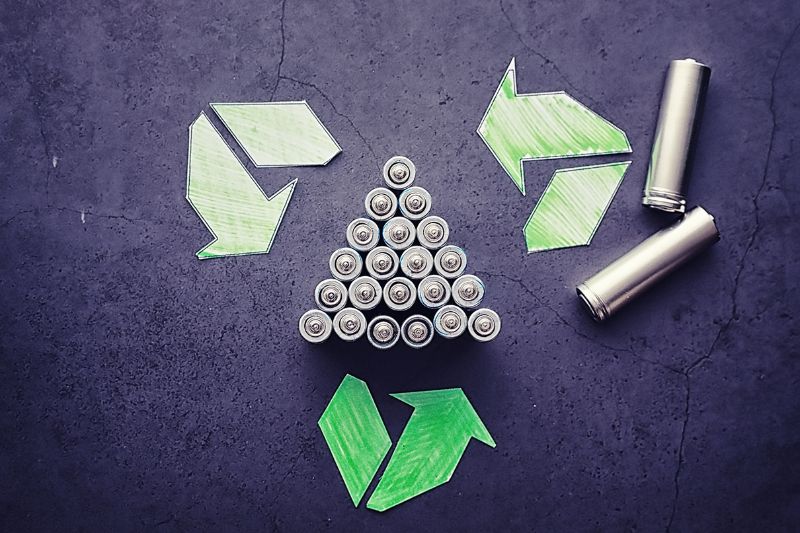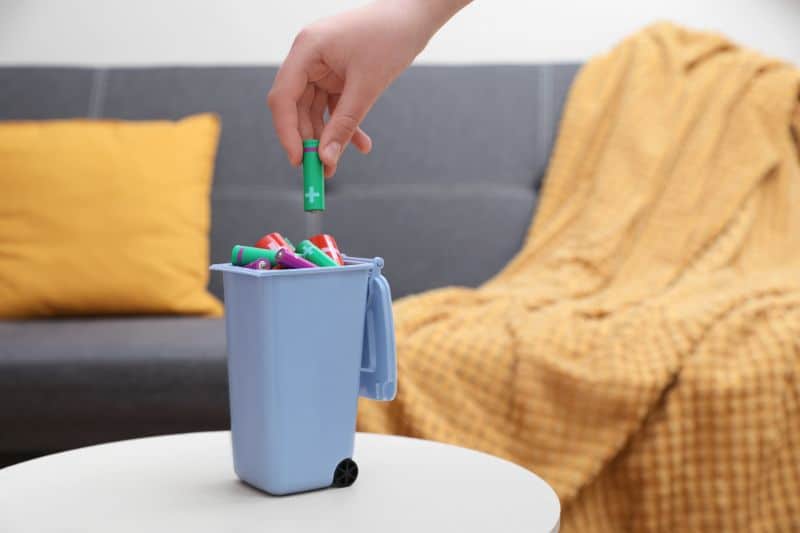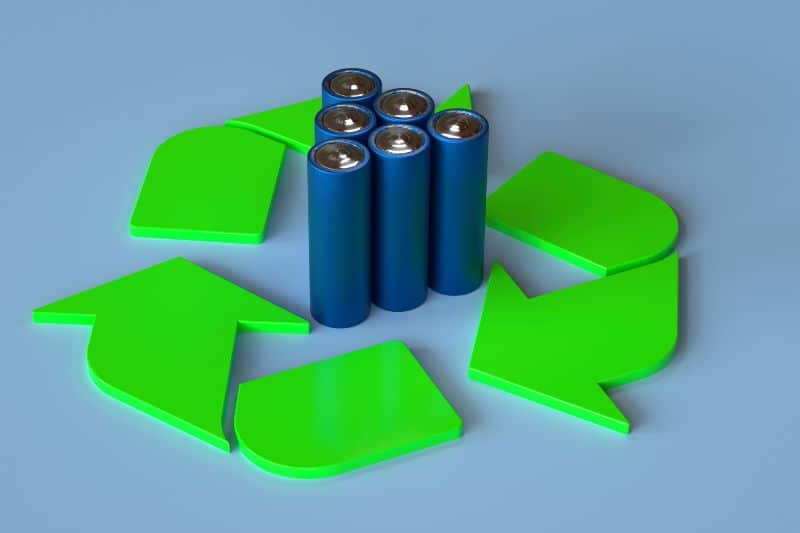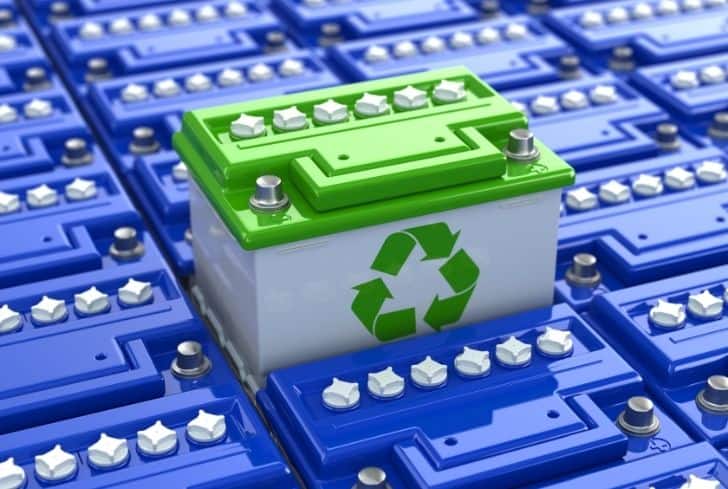These days, a good number of equipment we use run on either battery or gas. The common thing about these two elements is that you can use them until they get exhausted.
When they do, it is the usual practice to refill gas or throw old batteries away and get a new one — of course, unless you are working with the rechargeable variety.
However, disposing of batteries could create a large portion of environmental waste. Besides, batteries are widely used and come with lots of harmful material. So, disposing of them may not be a great idea.
A better option? Recycling them!
Yes, much like plastic and paper, you can recycle batteries, although knowledge about their recyclability is not as widespread.
So, we have put this article together to take you through the basics of battery recycling. Herein, we will tell you all about the process of recycling batteries and why you should consider it.
Let’s dive in!
What is Battery Recycling?
Before getting to what battery recycling is, let’s begin by asking ourselves this simple question — What are batteries?
Well, a battery is a material that contains electrochemicals and can convert chemicals to electricity.
Battery recycling is the reuse and reprocessing practice of batteries to reduce the number of batteries disposed of as material waste.
Batteries contain several poisonous chemicals and heavy metals, and their dumping has attracted environmental concerns due to water and soil contamination. As such, batteries need recycling to comply with environmental and health benefits.
Typically, you can use a battery to supply power to different devices. These devices include phones, cars, lamps, yada yada. In fact, you can even power a house with batteries as another source of electricity supply.
Usually, the better the quality of the batteries you buy, the longer they will serve you.
But then, even with the industry’s finest quality, one thing remains apparent here — no battery can serve you forever!
At some point, you will need to bid your adieu to them and head to the store for new ones.
But what happens to your old ones? Dispose of them like the rest of the trash? Well, it’s still possible, but that’s not a clever way of bidding farewell to your cell batteries once they’ve lived their life.
And that is where battery recycling comes in!
Battery recycling involves processing waste batteries. The goal of recycling is to ensure you can reuse rather than dispose of them. This is very important because it reduces the number of batteries disposed of improperly, significantly reducing their potential impact on the environment.
You see, one thing you should know is that batteries contain poisonous substances and metals. And when you regularly dispose of battery cells, these substances may leach into the soil, causing soil and water pollution.
So, it would be best to guard the environment against these harmful effects. Even more, with recycling, there is less need for new battery production, which contributes to the world’s material waste.

How are Batteries Recycled? (Step-by-Step Process of Battery Recycling)
Now that batteries can be recycled, next is to understand how you can recycle them. We’ll be examining that shortly, but first, it’s worth mentioning that batteries are of different kinds.
The variance is based on their components. These components include lead, lithium-ion (Li-ion), nickel-metal hydride (Ni-MH), nickel-cadmium (Ni-Cd), lithium-ion polymer, nickel-zinc, and alkaline.
And since these components have different properties, different batteries vary in use, power, and lifespan.
And while you can recycle most types, the process differs, with some being easier to recycle than others. Keep in mind that this sometimes depends on the value of their components and the toxic levels of the chemicals used to make them.
That said, here is the step-by-step process involved in recycling different batteries. Let’s go!
1. Process of Recycling Lead-Acid Batteries
Lead-acid batteries are the earliest form of rechargeable batteries in the world. They come from a mixture of lead and sulphuric acid.
These batteries are known for their weight and low durability. Many vehicle producers use lead batteries to power automobiles.
Here is a step-by-step process through which you can recycle lead batteries:
Step 1: Collection
This process involves gathering lead batteries from disposal points. A recycling company collects these batteries at this stage.
Step 2: Crushing
The next step involved in recycling lead batteries is breaking them apart. At the recycling facility, recyclers use hammer mills to crush the battery into fragments.
Step 3: Sorting
This process involves separating the parts of a lead-acid battery. Recyclers sort the plastic and paper components of the batteries from the lead and metal components. The lead and heavy metals in the battery undergo further processing afterwards.
Step 4: Sieving
During this process, recyclers remove thermoplastics in the battery. Then, they sieve out the liquid in the battery and leave the dry lead components. The lead and heavy metals move ahead for the final step of recycling.
On the other hand, the plastic materials removed from the battery undergo washing. The recyclers then send the thermoplastic to plastic recyclers, who reprocess them.
The thermoplastics are suitable materials for making casings for new batteries. Plastic manufacturers also make new plastic products from these thermoplastics.
Step 5: Extraction Processes
The final step of lead-acid battery recycling involves the extraction of lead and heavy metal components from the remains of the battery.
There are two processes involved in this step. The first process consists of using liquid solutions to recover metal from materials that contain them. On the other hand, the second process involves using high temperatures to take out and refine metals.
Combining these processes, the lead and heavy metal in the battery undergo four procedures. These procedures are calcinations (heating), roasting, smelting, and refining. The end product is molten lead. Recyclers mold the molten lead and transfer it to manufacturers to make new batteries.
2. Recycling Alkaline Zinc Air /Zinc Carbon Batteries
Alkaline batteries go through a recycling process that involves dismantling the battery parts mechanically.
Like lead batteries and all other batteries, the first step is collecting used alkaline batteries. Then, the batteries get sorted after dismantling.
After disassembling the batteries, recyclers retrieve three parts for further processing. The pieces are steel components, plastic and paper components, and zinc and manganese components.
Then, these materials undergo processing at recycling facilities where manufacturers retrieve them to produce new products.

3. Recycling Lithium Ion, Nickel Metal Hydride, Nickel-Cadmium Batteries
Lithium-ion (Li-ion) batteries are rechargeable batteries used in cars and electronics. Nickel-based batteries are rechargeable and used in vehicles and portable devices like cameras.
These batteries share similarities in the recycling process. They also share some similarities with lead-acid batteries in the final process of recycling. Here is a detailed step-by-step process for recycling lithium and nickel batteries.
Step 1: Collection
This is the process where recyclers collect used lithium and nickel batteries from collection points or other locations.
Step 2: Sorting
In this step, recyclers separate plastic materials in a battery from metal components. Both materials are perfect for making new products.
Step 3: Smelting
The components of lithium-ion and nickel-based batteries undergo what is known as High-Temperature Metal Reclamation here.
Metals in the batteries also undergo extraction processes. Metals like nickel, manganese, chromium, and iron are extracted in this process and are used to make new products.
4. Recycling Mercury Batteries
After collection, mercury batteries undergo recycling through liquid and heat extraction methods. Mercury batteries contain highly toxic heavy metals. Due to the presence of these toxic metals, recyclers process them in controlled extraction environments.
The mercury retrieved from the extraction procedures is helpful in manufacturing new mercury batteries, measuring instruments, and parts of fluorescent lights. Manufacturers may use plastic and other materials they get from the batteries to make new products.
So, as seen, recycling batteries can be a challenging process. Recyclers must understand the procedures for recycling different battery types.
While mercury batteries are now fading out due to their highly toxic components, the rest of the battery types are still in use by equipment manufacturers.
You should know the components of your batteries as it will allow you to use the battery correctly and put it up for recycling.
Can You Put Batteries in the Recycle Bin?
You should not put batteries in a recycling bin. The reasons are simple. Putting batteries in a recycling bin makes it possible for the heavy metals and toxic substances in the battery to wash away. These harmful substances may find their way into other objects and cause soil, water, or air pollution.
Also, it is not advisable to put batteries in recycling bins for safety reasons. Even if some batteries are dead, disposing of them in recycling bins means they end up in trucks alongside other materials. The battery components may pose a risk of sparking due to the current generated by the truck’s movement and the battery itself.
So, think twice before you put that dead battery in a recycling bin. Instead, recycle appropriately by taking your battery to a collection point. That way, the recyclers will know how to process the battery and make something great out of it.
Benefits of Recycling Batteries
Now that you understand how to recycle your batteries, why should you recycle them?
Well, there are loads of reasons why recycling is a wise choice.
As we already stated, waste batteries can cause significant harm to our environment. And we do not want this. Recycling comes in to help us evade the repercussions of improper disposal so we can keep benefiting from their service without worrying much about their environmental impact.
That said, here are five ways battery recycling benefits the environment and the world.
1. Conservation of Non-Renewable Resources
Battery recycling plays a crucial role in preserving irreplaceable raw materials. By reusing old or waste batteries, recyclers help conserve metals and natural resources.
This sustainable practice enables other manufacturers to utilize these resources for further innovations, contributing to a more environmentally friendly and resource-efficient cycle.
2. Recycling Batteries Prevent Pollution
Dumping batteries improperly can cause the chemicals to wash away. The harmful chemicals may mix with the air and leach into water or the soil. Recycling batteries will prevent contact with the environment and avoid pollution.
3. Recycling Reduces Solid Waste That Ends Up In Landfills
When you recycle batteries, they can create new products. That way, they don’t have to be thrown into landfills.
4. Battery Recycling Saves Energy
Making new batteries consumes lots of energy. That’s unlike recycling, which requires a very minimal amount of energy.
By recycling, you save the energy used in making new batteries, allowing the energy provider to direct it to other purposes. Manufacturers can apply the power to other useful things.
5. Recycling Creates New Jobs
Recycling facilities need people to work through the whole process. As such, through battery recycling, more jobs are open to people.
Final Thoughts
Recycling is good for human beings and the environment. And with products like batteries, recycling protects us from the damage they can cause.
If you have batteries that are dead and seem useless, you should consider recycling them. You may also save the cost of buying a new battery.
Besides helping you choose recycling batteries, this article has shed light on what goes on in the recycling process. We have also highlighted a practice you should not engage in with batteries. With these tips, you can play a part in creating a safe world when using batteries.
References:







